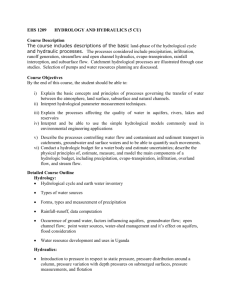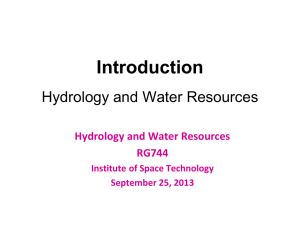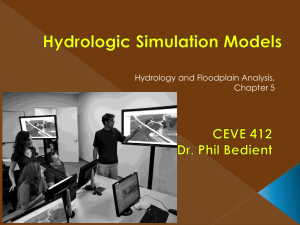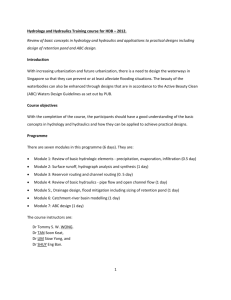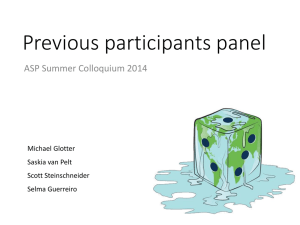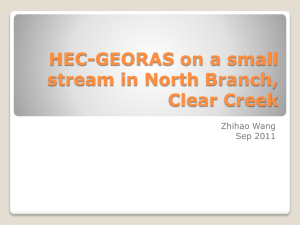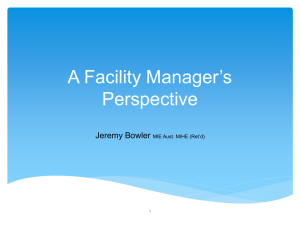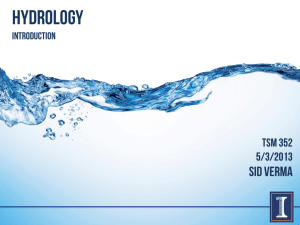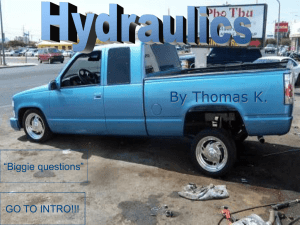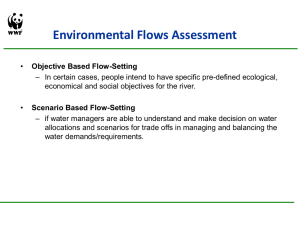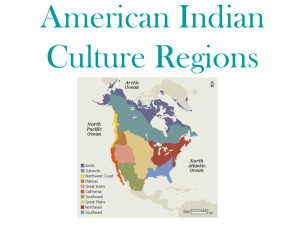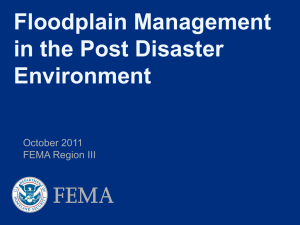Slide 1
advertisement
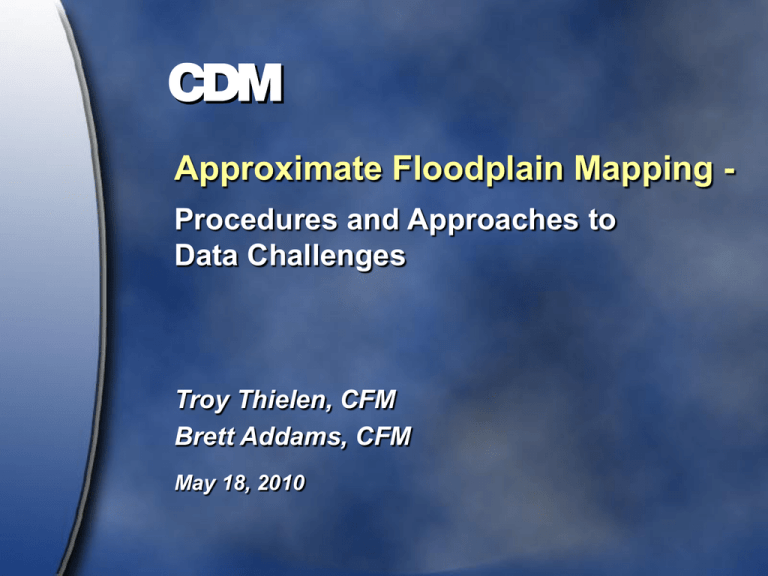
Approximate Floodplain Mapping Procedures and Approaches to Data Challenges Troy Thielen, CFM Brett Addams, CFM May 18, 2010 Procedures and Approaches to Data Challenges Overview 1. Approximate Floodplain Mapping Defined 2. Study Area 3. Procedure/Methodology 4. Challenges Encountered Approximate Study – Zone A DFIRM Challenges Encountered in Flat Terrain Case Study: Northwest Ohio’s Black Swamp region Source: Ohio History Central Challenges Encountered in Flat Terrain Methodology 1. Hydrology 2. Hydraulics 3. Mapping Hydrology Flows calculated using USGS Regression Equations Input parameters calculated by using ArcHydro, via StreamStats Hydrology USGS Regression Equation 100 = ( RC) * ( DA) 0.757 * ( SL10 -85 ) 0.232 * (W + 1) -0.295 100 RC = Peak flow for a 100-yr recurrence interval = Regression constant (dependent on project location) DA = Drainage area (sq. miles) SL10 -85 = Slope W= Open water or wetlands (percentage of drainage area) Hydrology StreamStats Web-based application that computes streamflow statistics for both gaged and ungaged sites. Includes a map-based user interface that uses ArcIMS, ArcSDE, ArcGIS and ArcHydro. http://water.usgs.gov/osw/streamstats/ssonline.html Hydrology StreamStats Hydrology Hydrology StreamStats Shapefiles Hydrology Vector Stream Network Digital Elevation Model ArcHydro Inputs Hydraulics Hydraulic Model: HEC-RAS HEC-GeoRAS extension of ArcGIS used for pre- and post-processing GIS inputs Process: 1. Pre-processing of GIS Data 2. Import to HEC-RAS 3. HEC-RAS modeling 4. Export HEC-RAS data to GIS Hydraulics Cutting Cross-sections Hydraulics Channel Manually Added to XS Geometry Hydraulics Model Input - Stream Centerline - Flowpaths - XS Cut Lines Terrain Grid Model Output - Bounding Polygons - Floodplain Boundaries (bp001) - XS Cut Lines Depth Grid Water Surface Grid Mapping Post-Processing of raw GeoRAS floodplain polygon output Review for accuracy Clean up data anomalies Adjust mapping to meet FEMA standards Mapping Post-Processing Challenges Encountered in Flat Terrain Hydrology – difficulty in defining drainage divides and flow paths Hydraulics – Floodplain outputs may indicate need for model corrections Island and Ponds – Segmented floodplain outputs require further analysis Lateral Flow Areas – Flat terrain can artificially amplify flooding effects Challenges Encountered in Flat Terrain Challenge: Hydrology Automated delineation of hydrologic features can result in erroneous results Analysis and manual correction is required Challenge: Hydrology Basin Delineation Challenge: Hydrology Ditch Network Challenges Encountered in Flat Terrain Challenge: Hydraulics Analysis of floodplain outputs may require review of modeling data Challenge: Hydraulics Raw HEC-GeoRAS output Challenge: Hydraulics Model Run 1 Challenge: Hydraulics Model Run 2 Challenge: Hydraulics Run 1 vs. Run 2 Challenges Encountered in Flat Terrain Challenge: ISLANDS and PONDS Very minor terrain variation can result in numerous islands and disconnected ponds Result: – Highly segmented floodplain output generated Challenge: Islands and Ponds Raw HEC-GeoRAS Output Depth Grids Subtract Ground DEM values from Water Surface DEM values Depth Grids Depth Grid – Stretched Depth Grids Depth Grid – Classified Values Challenge: Islands and Ponds Islands only slightly above the calculated WSEL Challenge: Islands and Ponds Disconnected ponds at very shallow depth Challenges Encountered in Flat Terrain Challenge: LATERAL FLOW AREAS Unreasonable split flow situations Unreasonably large flooding effects along portions of the floodplain Challenge: Lateral Flow Areas Raw HEC-GeoRAS Output Challenge: Lateral Flow Areas Conclusion Questions Troy Thielen, CFM thielentr@cdm.com Brett Addams, CFM addamsbh@cdm.com (312) 346-5000

